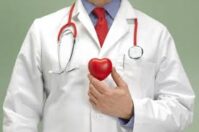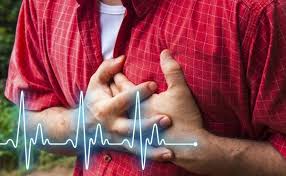
Top 10 Ways to Avoid an Attack
 An attack is mentioned within the medical arena, as a myocardial infarct. This coronary event follows after the guts muscle has been bereft of oxygen, due a blocked artery or arteries. Many cardiac problems are associated with partially blocked coronary arteries that nourish the guts muscle itself. The formation and buildup of plaque within the internal walls of the arteries may make them more inelastic, and increasing the danger of total blockage and therefore the resultant attack.
An attack is mentioned within the medical arena, as a myocardial infarct. This coronary event follows after the guts muscle has been bereft of oxygen, due a blocked artery or arteries. Many cardiac problems are associated with partially blocked coronary arteries that nourish the guts muscle itself. The formation and buildup of plaque within the internal walls of the arteries may make them more inelastic, and increasing the danger of total blockage and therefore the resultant attack.
Very often, it’s quite difficult to differentiate between attack and heartburn. Ignoring the signs of a attack increases the likelihood of permanent heart-muscle damage, by the minute.
The common signs of attack are a tightness, pain or discomfort within the chest. Sweating, nausea and vomiting that are amid intense pressure within the chest, also as, a radiating and intense pain that extends to the left arm are classic signs of attack.
Shortness-of-breath for quite a couple of minutes can also signal an imminent problem. Pain can also happen, almost anywhere above the waist, from the jaw and neck to the shoulders.
Remember, if you even think you’re having a attack, you want to call an ambulance, and place an aspirin under your tongue, unless you’re allergic.
Today, it’s very likely that upon your arrival at the emergency department, the medical professionals will administer intravenous clot-busting medications, in an effort to revive blood flow to the guts. These medications have proven to be extremely effective, when administered as soon as possible, following the event.
Risk Factors –
The risk factors, which will predispose you for the event of arteria coronaria disease and attack include: smoking, diabetes, elevates cholesterol levels, hypertension, case history of heart condition, lack of exercise, obesity, and a high-fat diet regimen.
Reducing Risks –
- Quitting smoking – nicotine is vasoconstrictor, which narrows the arteries and elevates vital sign.
- Eating healthy – avoid fatty foods, excess salt and meat, each of which, contributes to high vital sign and cholesterol levels.
- Controlling high vital sign – your vital sign should be carefully and frequently monitored, because the pressure can easily be controlled with medication.
- Cardiovascular exercise of half-hour duration, daily. Studies have shown that regular exercise of this duration has proven to possess very positive effects on one’s health.
- Preventing obesity – As obesity nears epidemic proportions during this country, it’s vital to take care of a weight that’s correct for your height and bone structure.
- Choosing a healthy lifestyle – a private wellness program encompasses variety of things interacting together.
- Practicing relaxation techniques – stress can take a terrible toll on your body.
- Performing regular deep-breathing exercises – studies have shown that humans generally use only about 20 – 25% of their lung capacity.
- Undergoing periodic cardiac evaluations. Since arteria coronaria disease remains the #1 killer of adults, and in 50% of these deaths, the initial symptom was overtime, regular cardiac evaluations are a requirement.
- Including anti-oxidant rich foods in your diet. Recent research suggests that ingesting foods rich in antioxidants features a positive effect on overall health.
Find a balance in life between work and leisure activities, abandon the couch for the outside, don’t watch sports on television, play sports instead, and you’ll increase your chances of living an extended and healthy life.

Leave a Reply